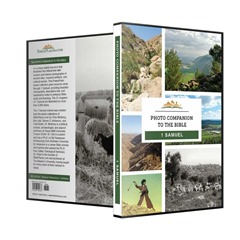“New archaeological findings in the city of Yavne may shed light on the city 2,000 years ago, when it was the center of Jewish life in the region and home to the Sanhedrin.”
“A lead sling stone bearing the name of a Seleucid leader who fought against the Hasmoneans was recently found in the southern Hebron Hills.”
Archaeologists have uncovered ancient glass kilns from the Roman period in the Jezreel Valley.
A Hasmonean-era oil lamp was discovered in the City of David shortly before Hanukkah began.
Chris McKinny and Kyle Keimer talk with Andrea Berlin about her excavations of Tel Anafa and Tel Qedesh and how that illuminates the history of the Galilee in the Hellenistic and Roman periods.
Gordon Govier writes about ancient seal impressions discovered through the use of wet-sifting for Christianity Today (subscription).
Israel’s Good Name reports on his visit to the Crusader ruins of Beit Itab in the Judean hills. He has also begun a new blog: Israel’s Good Bird.
Shechem is the latest site to be considered in Kyle Keimer’s “Why” series.
Jerusalem University College has announced its slate of spring online courses, including:
- Ancient Egypt and the Biblical World, taught by Paul Wright
- Archaeology of the Judean Shephelah, taught by Chris McKinny and Kyle Keimer
- Lessons from the Land: Applications for Teaching and Ministry, taught by John Monson
- Physical Settings of the Bible, taught by Chandler Collins
- The World of Jesus and His Disciples, taught by Rebecca Pettit
HT: Agade, Joseph Lauer, Arne Halbakken, Explorator, Ted Weis

